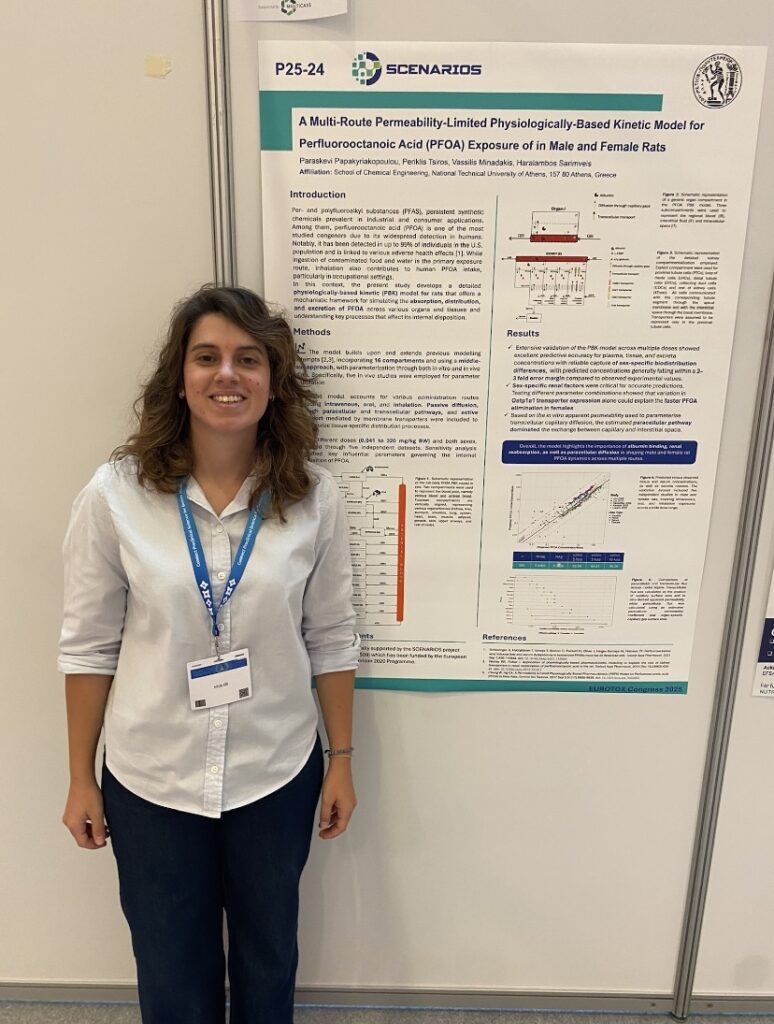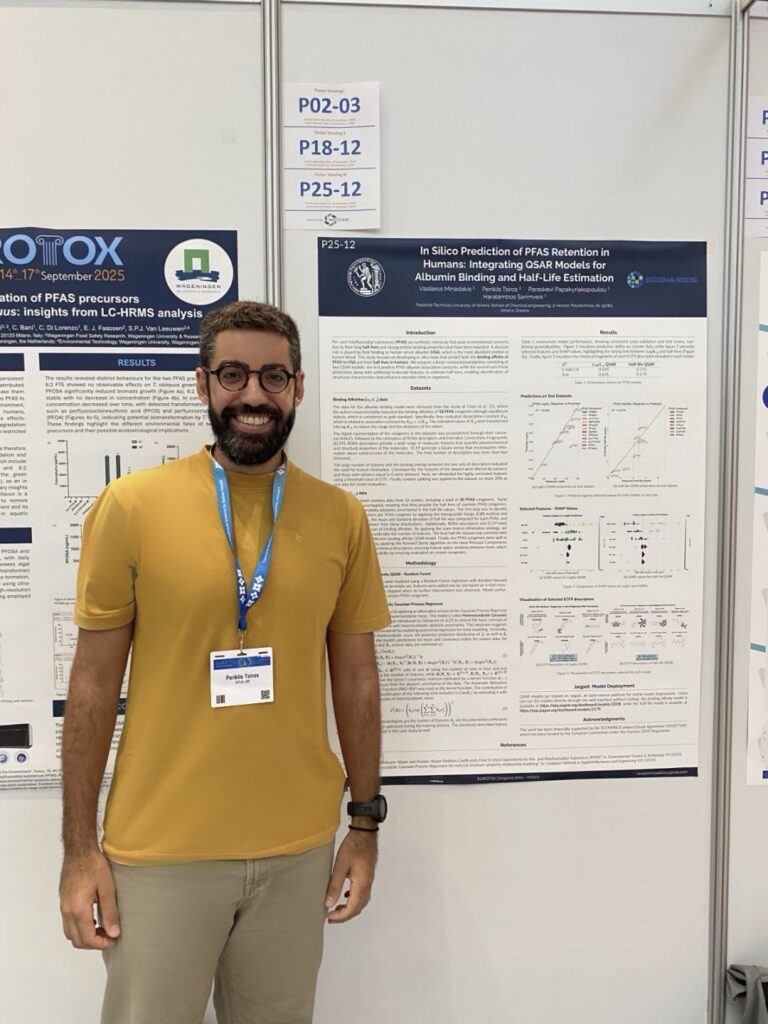The EUROTOX 2025 Congress took place in Athens, Greece, from 14 to 17 September 2025, gathering researchers, regulators, and industry experts to discuss the latest advances in toxicology and chemical safety. Around 800 people attended this relevant event that connected several fields (neurotoxicity, immunotoxicity, environmental studies), and different toxicants (PFAS, biopesticides, nanoplastics, nanoparticles, etc). There was an important participation from SCENARIOS representatives presenting several outcomes from the work carried in the. project.
Paraskevi Papakyriakopoulou from the National Technical University of Athens presented a poster entitled “A Multi-Route Permeability-Limited Physiologically-Based Kinetic Model for Perfluorooctanoic Acid (PFOA) Exposure in Male and Female Rats”, highlighting novel advances in mechanistic toxicokinetic modeling. The presented work introduces a comprehensive physiologically-based kinetic (PBK) model to describe the absorption, distribution, metabolism, and excretion of PFOA in rats across multiple routes of exposure. Building upon and extending earlier models, it integrates permeability-limited processes within 16 compartments, supported by parameterization from in vitro and in vivo datasets. The model accounts for oral, intravenous, and inhalation routes. Sensitivity analysis highlighted the central role of protein binding and sex-specific renal transport processes in shaping internal PFOA kinetics, consistent with the faster clearance observed in females. Validation against multiple independent datasets demonstrated strong predictive accuracy, with simulated tissue concentrations generally within a two- to three-fold margin of experimental data. This study contributes directly to the objectives of the SCENARIOS project, which addresses the challenges of assessing PFAS within next-generation risk assessment frameworks. By explicitly integrating albumin binding, renal reabsorption, and paracellular transport into a multi-route PBK model, the work provides a mechanistic lens to interpret sex-related differences in PFOA kinetics. The inclusion of refined inhalation processes and detailed kidney sub-compartmentalization broadens the scope of application, offering a versatile platform to explore internal dose metrics under diverse exposure scenarios.



Periklis Tsiros from the National Technical University of Athens presented a poster entitled “In Silico Prediction of PFAS Retention in Humans: Integrating QSAR Models for Albumin Binding and Half-Life Estimation”, showcasing novel approaches for computational assessment of persistent chemicals. The study introduces a two-step quantitative structure–activity relationship (QSAR) pipeline designed to predict human serum albumin (HSA) binding affinities and biological half-lives of per- and polyfluoroalkyl substances (PFAS). The first model applies a Random Forest regression to estimate association constants (logKA) from computational descriptors, while the second model employs a heteroscedastic Gaussian Process Regressor to capture half-life variability, integrating both structural features and predicted binding affinities. The models are deployed on the Jaqpot platform, enabling direct online use by the scientific community without coding expertise. This work advances the goals of the SCENARIOS project by delivering in silico tools for next-generation risk assessment of PFAS. By linking molecular properties with key toxicokinetic endpoints, the approach provides valuable insights into structure-retention relationships and supports integrated assessment strategies for highly persistent chemicals.
Natividad Isabel Navarro Pacheco from University of Castilla-La Mancha. in Toledo, Spain, also presented a poster titled “Impact of per- and polyfluoroalkyl substances on soil enzyme activities in arid and Mediterranean agricultural soils”.
Wiebke Alker from from German Federal Institute for Risk Assessment presented a poster with the title “Effects of Novel (Poly-) Ether PFAS an the Transcriptome of HepaRG cells”.
We are looking forward to more events where the results from the project efforts can be presented to the general public and PFAS community.